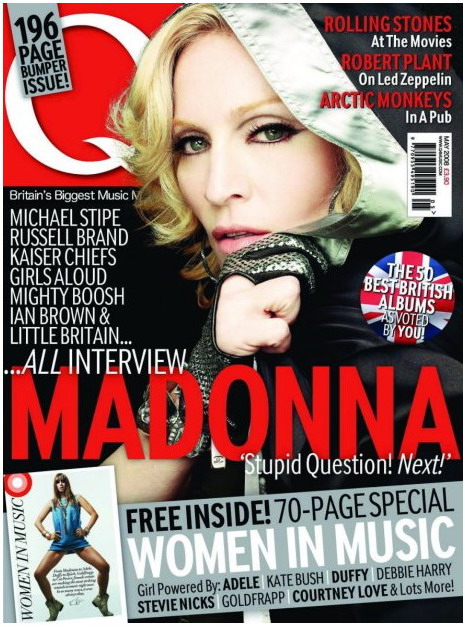 'Vibe' magazine follows typical magazine conventions, however differs from those such as 'MOJO', 'NME' or 'Q'. 'Vibe' is more of an unknown magazine and therefore the masthead is placed in front of the model, as appose to behind, to ensure the name is in full view of the audience. The masthead is also placed central to the splash and is bold and bright, contrasting against the black and white theme of the main image, ensuring that it stands out from all other conventions.
'Vibe' magazine follows typical magazine conventions, however differs from those such as 'MOJO', 'NME' or 'Q'. 'Vibe' is more of an unknown magazine and therefore the masthead is placed in front of the model, as appose to behind, to ensure the name is in full view of the audience. The masthead is also placed central to the splash and is bold and bright, contrasting against the black and white theme of the main image, ensuring that it stands out from all other conventions. The institution of 'VIBE' is Vibe. 'VIBE' magazine is a commercial magazine with it's own website, it's main purpose being to make money. The main contents of 'VIBE' are music related and there to entertain, however, as it is a commercial magazine adverts have to be included to ensure money is being made.
The main image of T.I is large, covering a large percentage of the splash, and is shot straight on in a close up, guaranteeing all facial expressions are clearly seen. The strong eye-contact and narrow eyes make T.I look in power and, in turn make the audience feel intimidated. This connects well with the feel of the magazine and also T.I's image; a dominant male character throughout music. This pose also makes T.I look as though he is in control of himself, knows what he wants and as though he is confident with himself and also his position in music. The black and white element of the picture adds to the classiness of not only the magazine but also the model, along with the clothing he is wearing. The shirt and tie combination gives T.I a classy edge, which contrasts with the bad boy image that is partly associated with him. However, by adding casual glasses this shows that he is not all work and that he is also layed back, connoting that T.I can be relatable despite his position in the music industry.
Similarly, the black and white theme of the magazine connotes class and gives the magazine a more high profile look. Putting the red against the running monochrome theme helps important elements stand out to the audience, making conventions such as the masthead and cover lines become more noticeable. Also featured in a red font is a quote from T.I in the main cover line. The quote, as appose to T.I's name, has been written in red to ensure that it stands out to the audience and gives them awareness as to what is included in the interview. T.I's name is not in red and the audience already know who the article will be about, due to the main image and therefore is less important, whereas the quote has the ability to draw the reader in more as it shows T.I speaking voice, making the interview more personal.
The cover lines, placed down both the left and right side of the splash draw the reader in while also giving them an idea as to what, and who will be included in the magazine. The main cover line is the largest and therefore directs the readers eye straight to it. The cover line relates to the main image and also includes the caption "The untold story behind the deal", which urges the reader to take an interest in the magazine as the article is 'untold' and therefore gives the idea that it is exclusive. The opposite cover line titled "50 cent, prince, lauryn hill, dr. dre, jay-z and biggie. 51 LOST ALBUMS" is a further contributing factor towards the reader wanting to buy the magazine. As 'VIBE' is aiming towards people who are interested in the hip-hop and grime music genre, this gets their attention well by listing artists key to the specific genre. As the cover line also mentions 'lost albums' this makes the reader want to know more, as yet again the content is exclusive because the albums have been 'lost' and therefore no one has even seen or heard them before. This connotes that by buying the magazine you will be the first to know about the albums and therefore know more about that specific music genre.
The bar code is placed in the bottom right hand corner of the splash, ensuring that it is away from the main cover line/cover lines, thus keeping the attention towards the main features. Placed under the bar code is the website of the magazine, http://www.vibe.com/, which lets the readers know where they can find out more about the magazine and therefore broadening the amount of information they can receive about the magazine as a whole.

